Designing a World-Class Hospital in India (2025)

Table of content
In India’s 2025 healthcare landscape, the minimum bar is clear: NABH 6th Edition (quality & safety) and NBC 2016 Part-4 (fire & life safety). But meeting codes alone doesn’t make a hospital world-class.
A world-class hospital blends compliance + patient experience + global design benchmarks + future-ready technology. It’s about creating environments that heal faster, operate efficiently, scale sustainably, and attract both patients and talent.
Read about the requirements in hospital construction
1. Patient-Centered Environments (Practical Focus)
- Natural light & healing architecture
- Practical tip: Place wards and patient rooms on the north/south faces to maximize daylight and minimize glare/heat load.
- Diagram idea: A cross-section sketch showing deep courtyards bringing daylight into double-loaded corridors.
- Drawing note: Add “Window-to-wall ratio ≥ 40% in patient rooms; glazed courtyards for natural ventilation.”
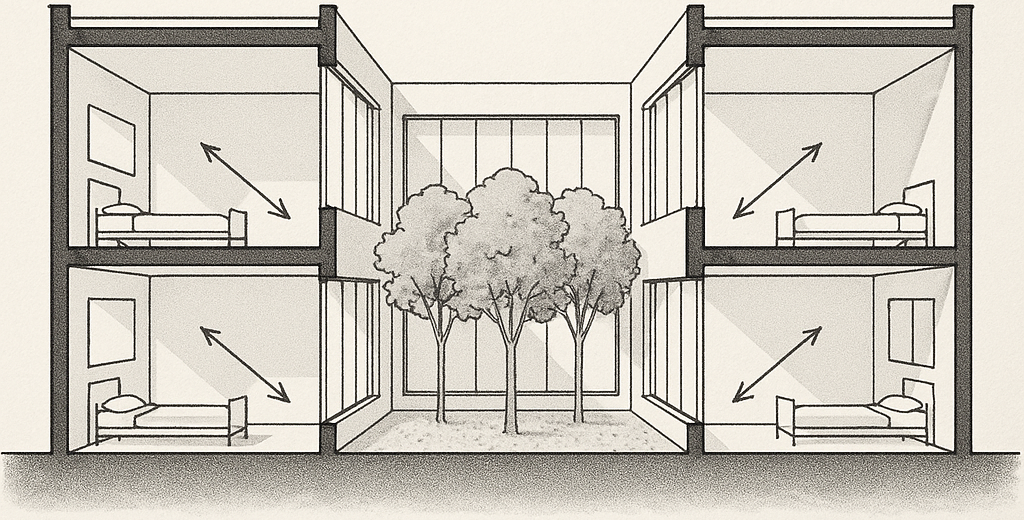
- Wayfinding & comfort
- Practical tip: Use color-coded zones (e.g., red = emergency, blue = diagnostics) with overhead signage + tactile flooring.
- Diagram idea: Floor plan color overlay showing how patients move from lobby → diagnostics → ward without crossing service flows.
- Drawing note: Mark “universal accessibility features (ramps, tactile cues, signage fonts ≥ 16pt)” directly on plans.
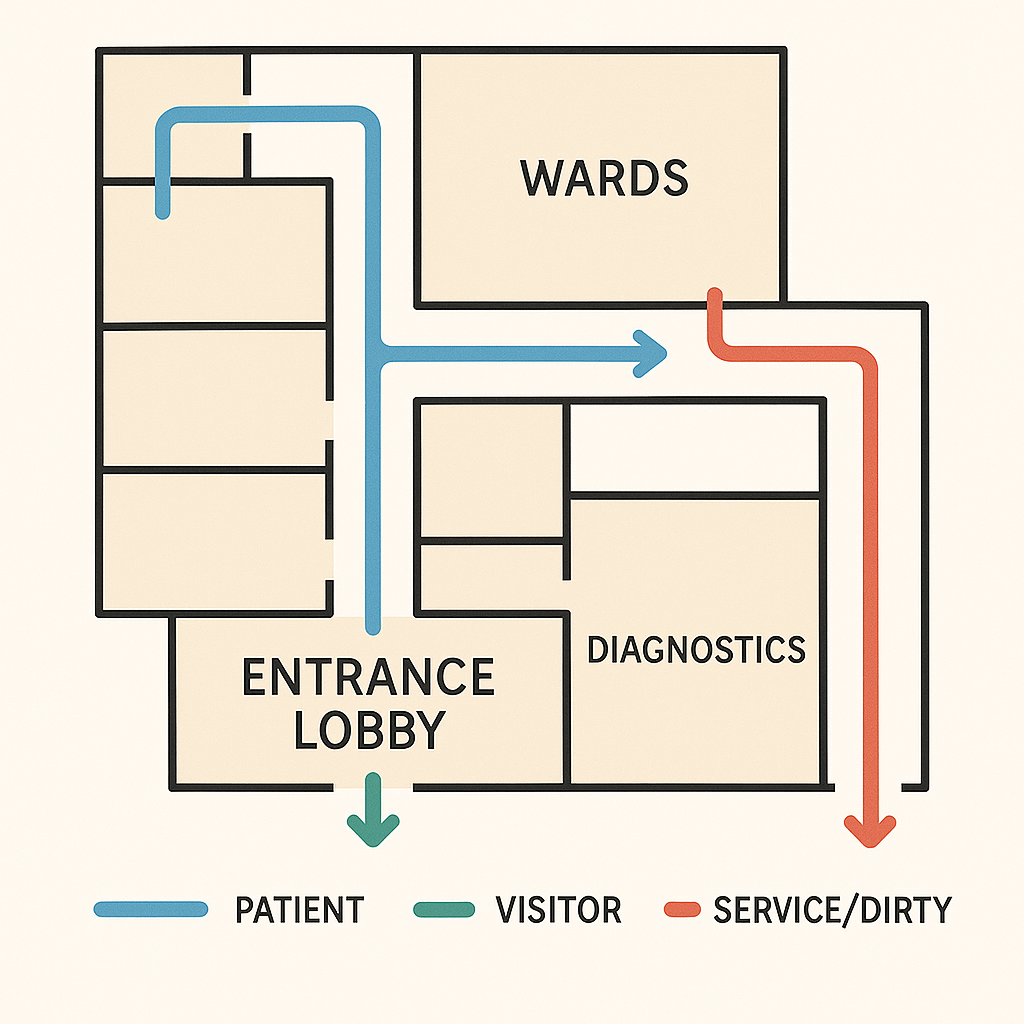
- Privacy & dignity
- Practical tip: Layout single/double-bed clusters with shared family lounges instead of large open wards.
- Diagram idea: Ward block sketch showing 6–8 rooms per cluster with a central family lounge.
- Drawing note: Maintain 3.6 m min. between bed centers for ICU/ward layouts (per NABH IPC).
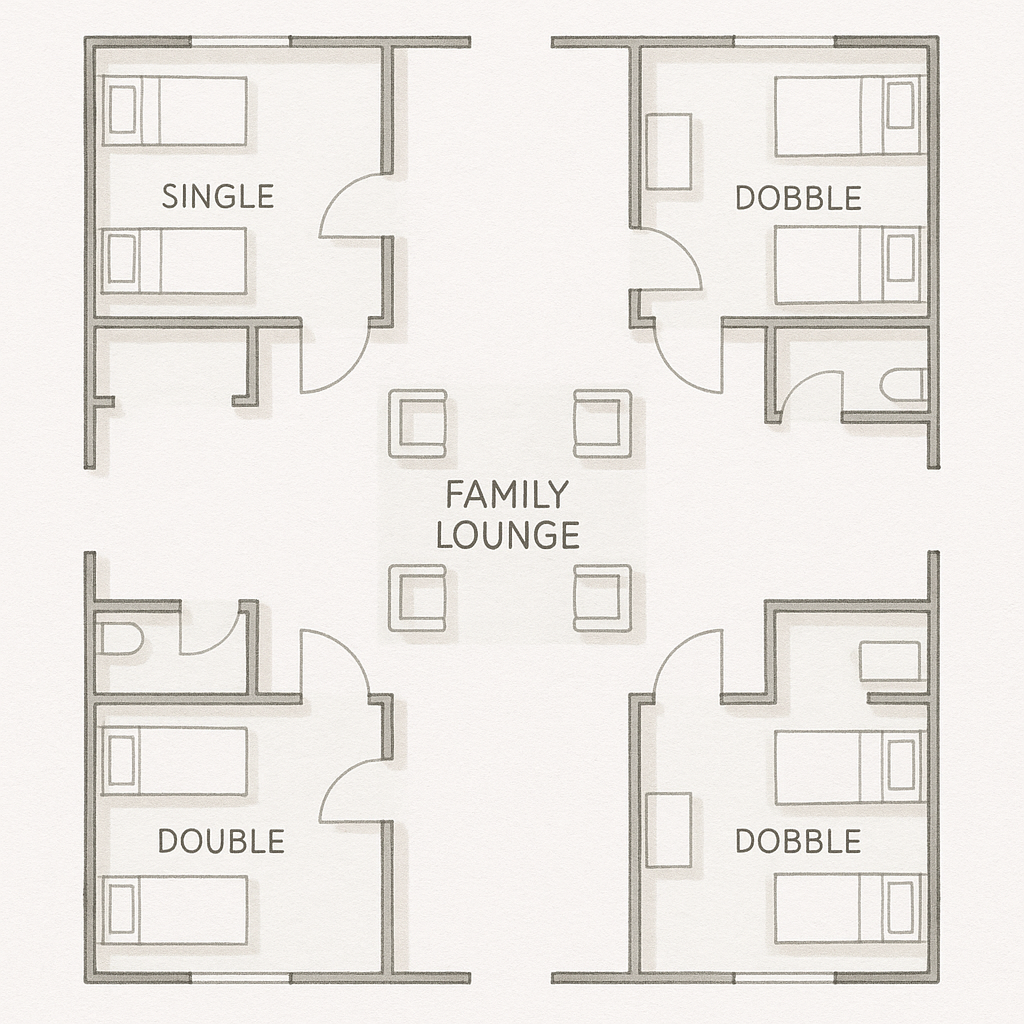
How to build a patient centric hospital in India
2. Smart & Digital-Ready Infrastructure
- Smart hospitals (IoT & monitoring)
- Practical tip: Create a “Digital Riser Shaft” like you would for MEP shafts — for cabling, sensors, and IoT devices.
- Diagram idea: Vertical core drawing with labelled conduits for nurse call, patient monitoring, and CCTV.
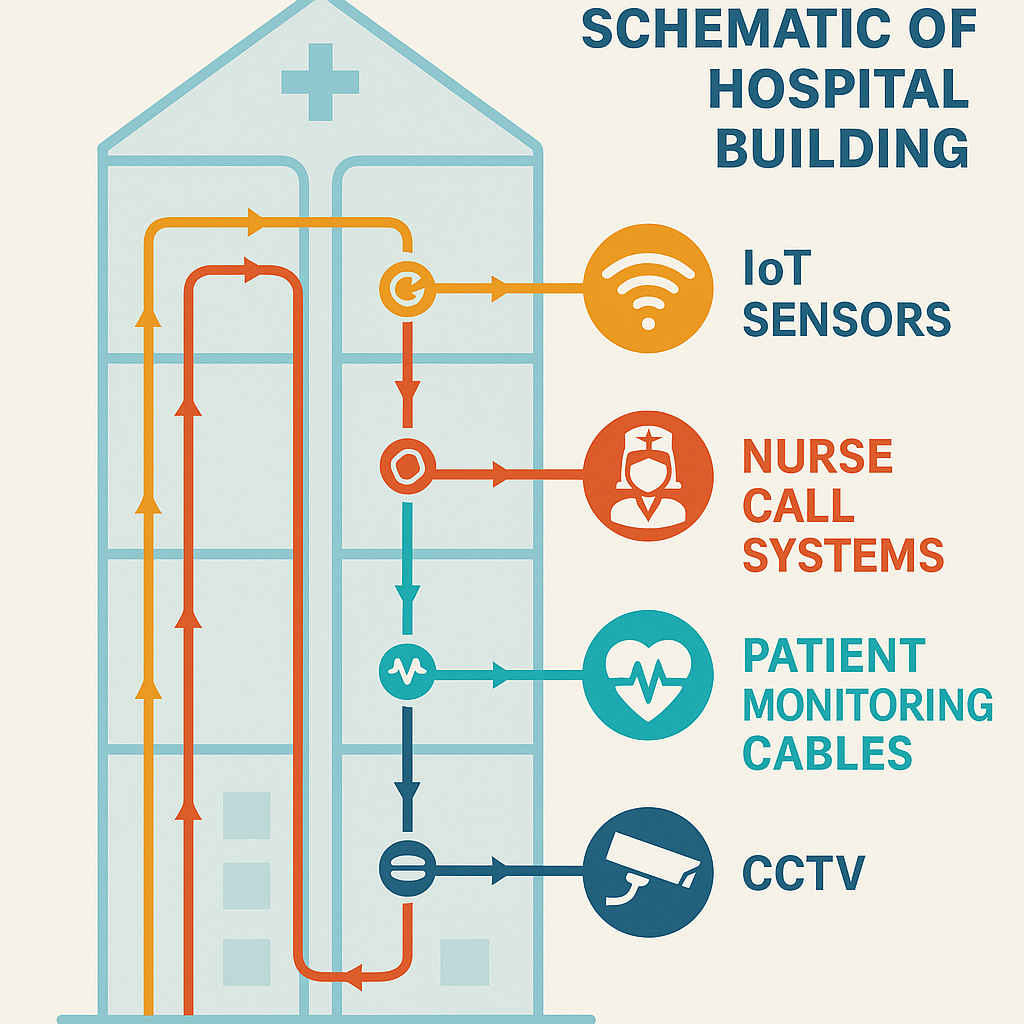
- Telemedicine & tele-ICU hubs
- Practical tip: Allocate dedicated tele-ICU rooms with redundant fiber backbone + dual power feeds.
- Diagram idea: Block diagram of hub-and-spoke tele-ICU network with 24x7 monitoring wall.
- AI-driven operations
- Practical tip: Embed BMS dashboards in control rooms that integrate HVAC pressures, ACH logs, and IPC alerts.
- Drawing note: Show BMS room adjacency to engineering control in floor plans.
- EHR integration
- Practical tip: Plan for edge servers on every floor to ensure uptime during internet drops.
- Diagram idea: Network topology diagram showing nurse stations → edge server → main server room → cloud backup.
3. Clinical & Infection Control Flows
- Clean/soiled segregation
- Practical tip: Use two separate lift cores (public/clean vs dirty/service).
- Diagram idea: Stack diagram highlighting CSSD → OT sterile core → ICU clean corridor, with soiled flow separated.
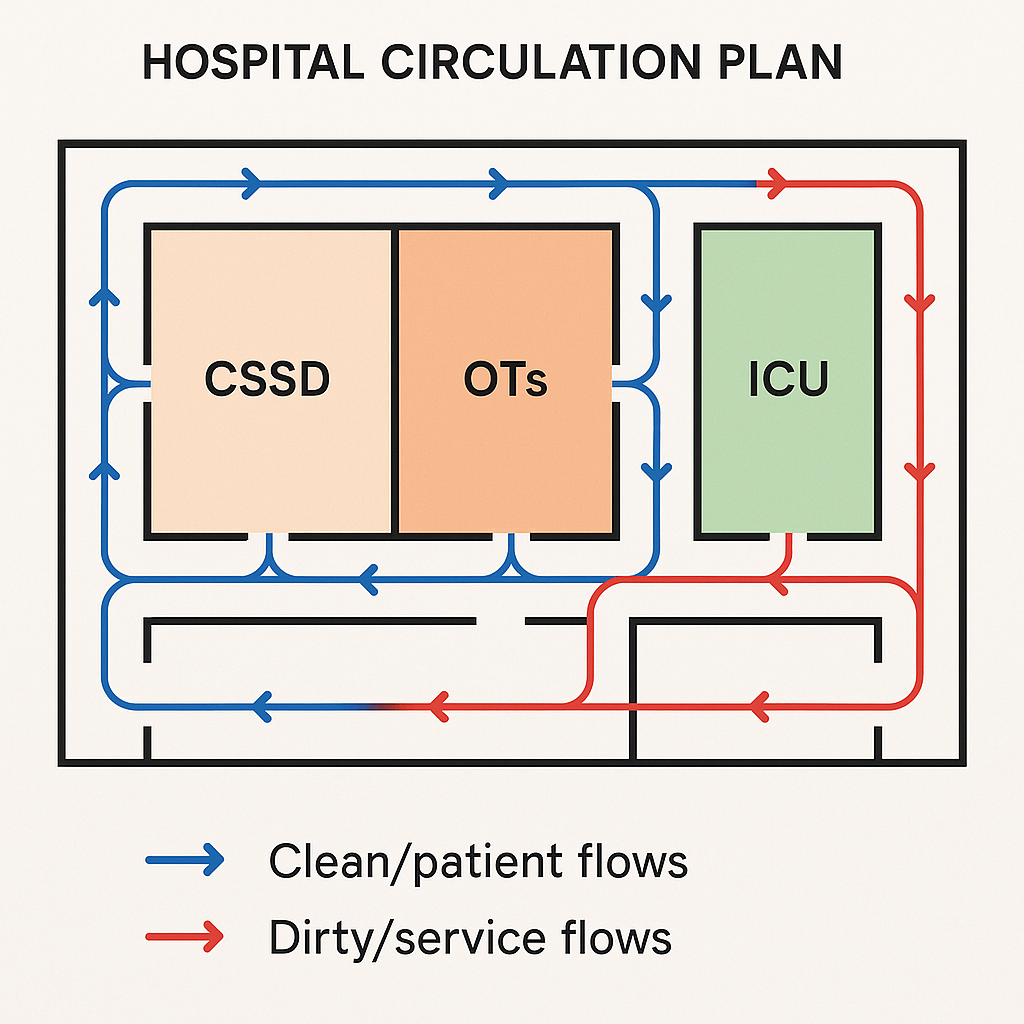
- HVAC zoning (ASHRAE 170 & NCDC)
- Practical tip: Mark pressure arrows in OT/ICU/CSSD drawings (positive → neutral → negative).
- Diagram idea: Schematic section of OT complex showing pressure cascade and air-change values.
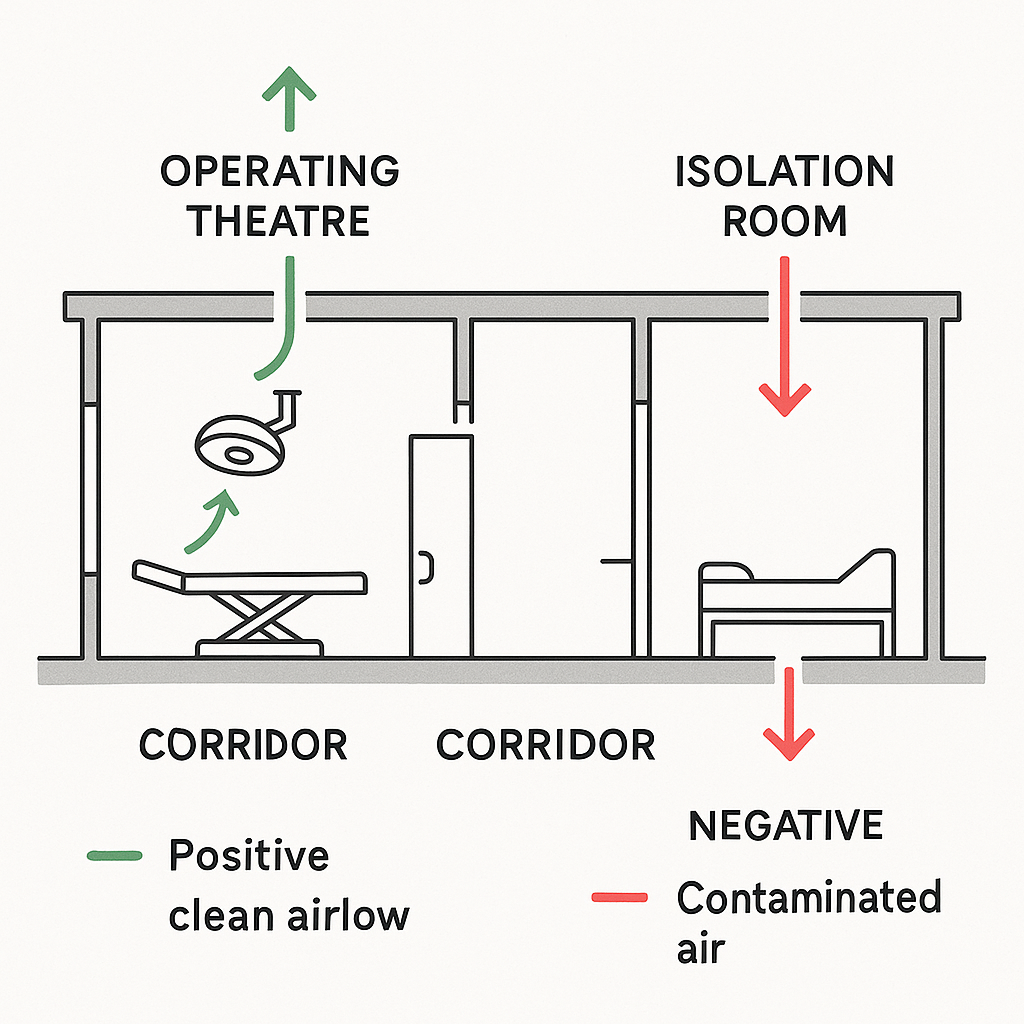
- Modular flexibility
- Practical tip: Size OTs at 6.5 x 6.5 m clear so they can convert to hybrid OT with imaging in future.
- Diagram idea: Before/after floor plan overlay (OT converted into hybrid).
- Emergency preparedness
- Practical tip: Refuge areas every 24 m vertical rise (NBC clause), clearly shown in core drawings.
- Diagram idea: High-rise block section with refuge balconies every 7 floors.
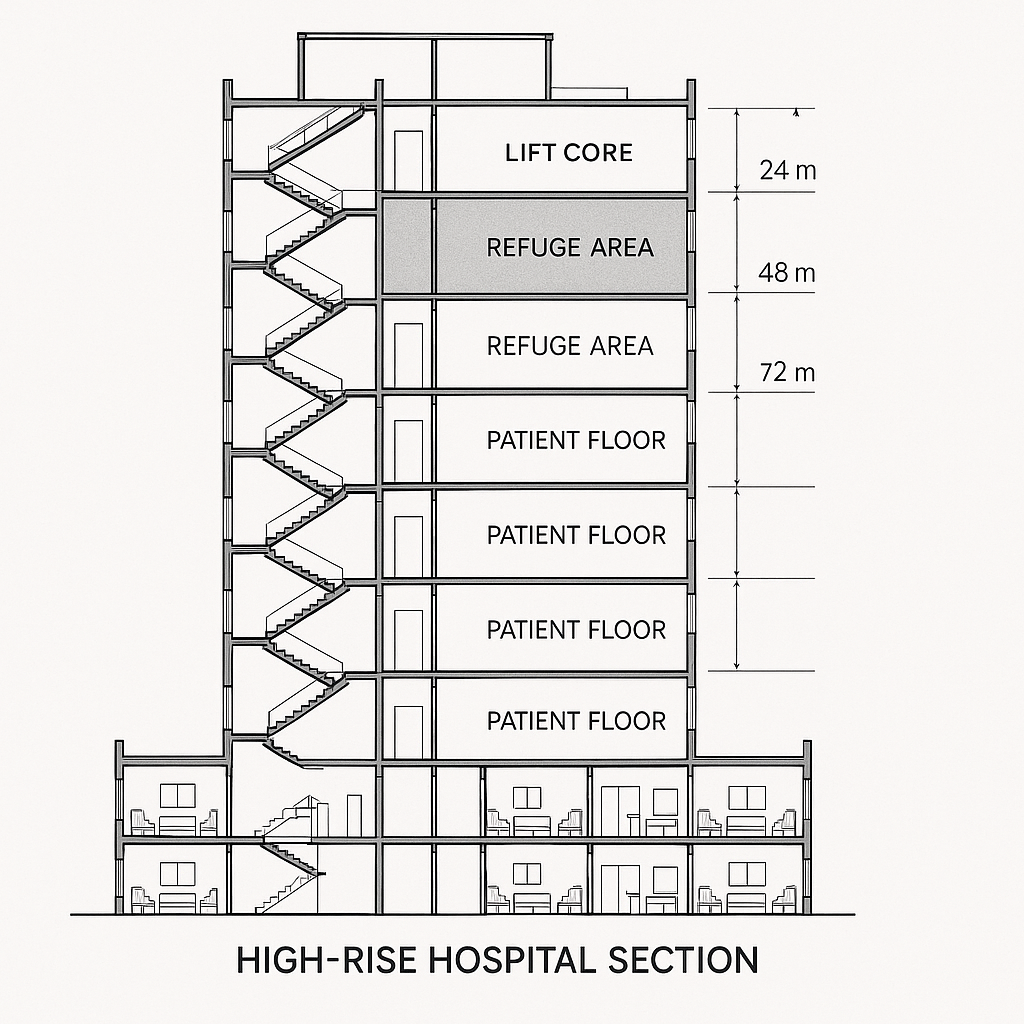
How to plan a hospital in India in 2025
4. Sustainable & Green Hospitals
- Certifications (IGBC/GRIHA)
- Practical tip: Aim for 20–30% energy savings via HVAC optimization and natural ventilation.
- Diagram idea: Sankey diagram showing % energy use by HVAC, lighting, and equipment.
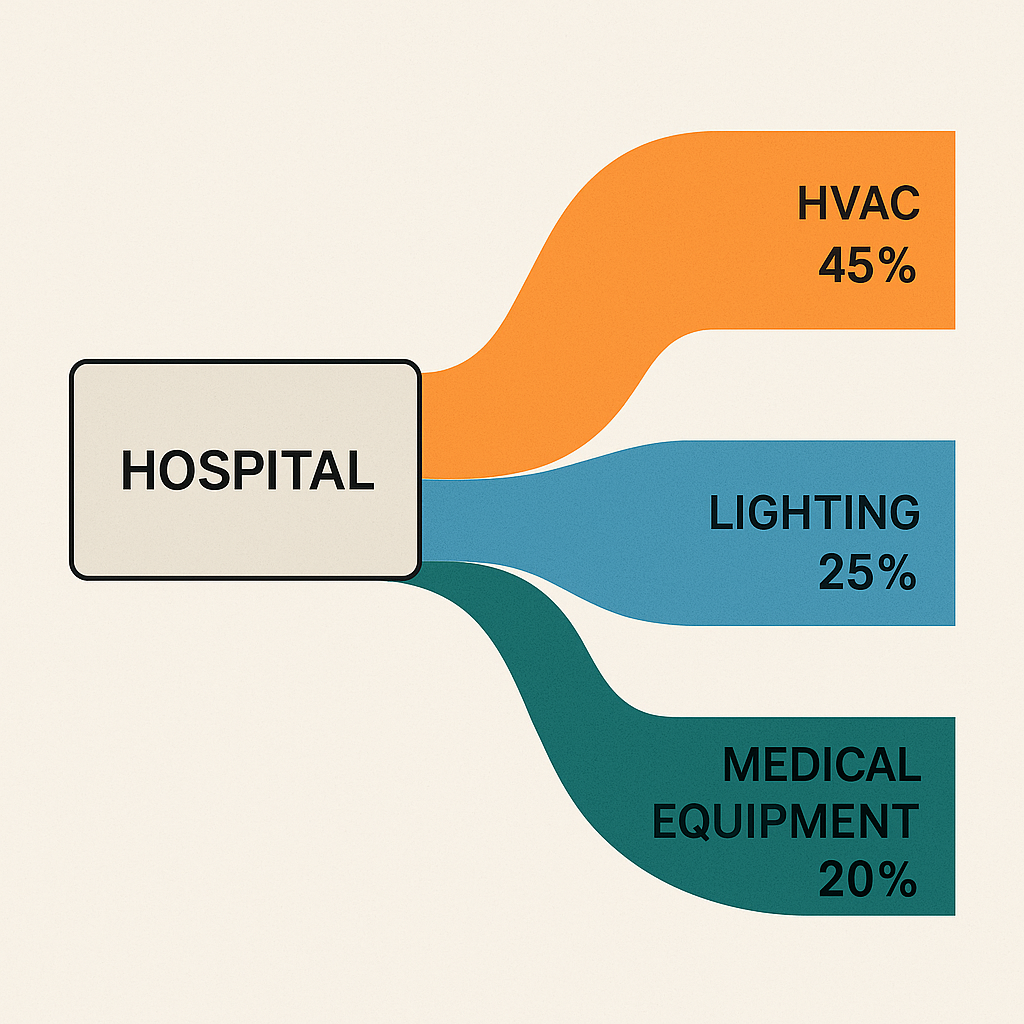
- Energy & water
- Practical tip: Place rooftop solar + STP at site rear; reclaim treated water for flushing/HVAC.
- Diagram idea: Utility site plan showing solar panels, rainwater tanks, and STP loop.
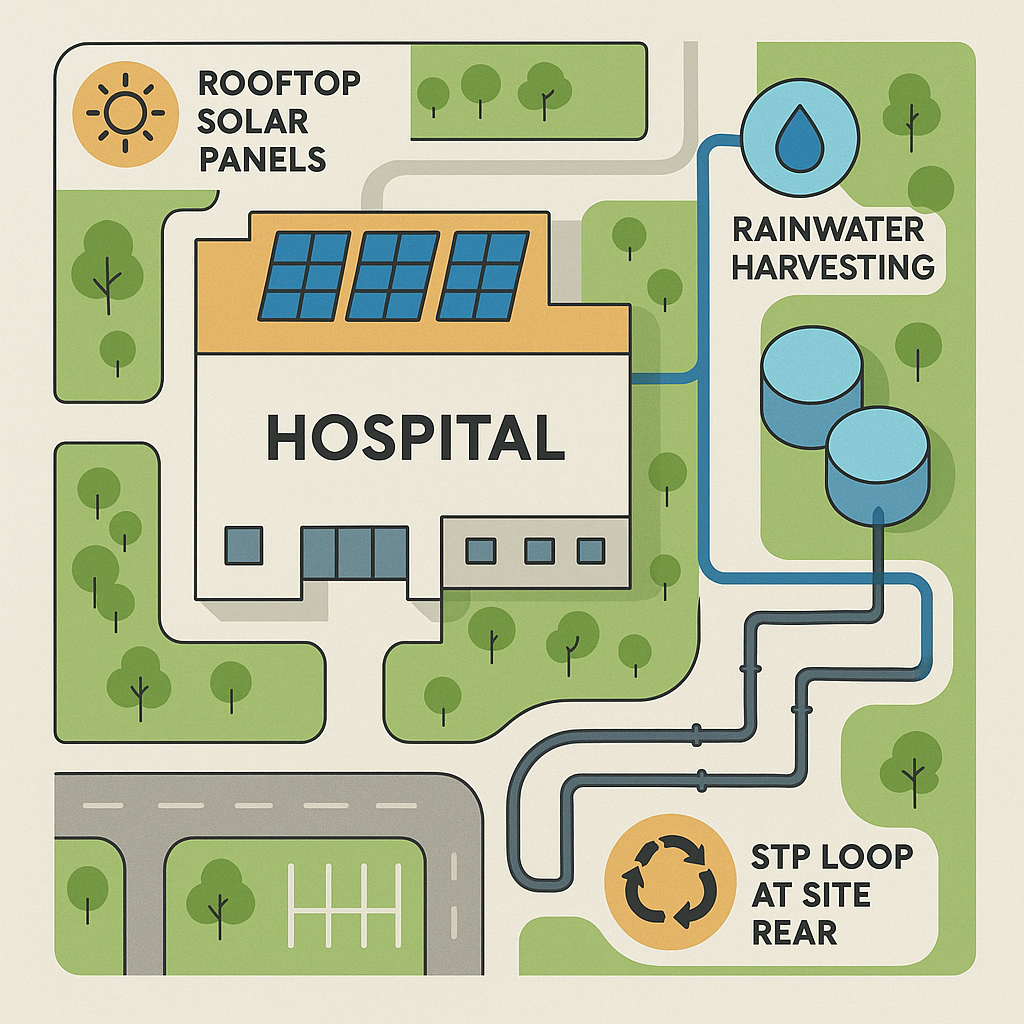
- Materials
- Practical tip: Specify low-VOC, antimicrobial flooring with documented cleaning cycles.
- Drawing note: Add “All interior finishes to comply with NABH IPC cleaning protocols.”
Design vision has to meet financial reality. Verified benchmarks show that hospital capital expenditure (capex) in India varies widely depending on size, specialty mix, and location.
- 50-bed hospitals (general, multispecialty): Typically cost ₹10–30 crores, or about ₹20–60 lakh per bed (excluding land).
- 100-bed hospitals (with diagnostics and ICUs): Range between ₹50–146 crores, or about ₹50 lakh–1.46 crore per bed.
- Corporate/large network hospitals (200–500+ beds in metros): Industry reports note ₹30 lakh–1.5 crore per bed as typical capex, with higher intensity in tertiary/quaternary care.
By comparison, international builds (Singapore, UAE) average $1–1.5 million per bed — roughly 3–4× higher than India.
Typical Capex Split (India, 2025)
Industry benchmarks also provide guidance on how costs are distributed across categories:
- Civil & structure: ~30–40%
- MEP (mechanical, electrical, plumbing) + HVAC + gases: ~25–40% (WSP notes MEP can reach ~40% in healthcare buildings).
- Medical equipment & IT: ~20–30% of total costs.
- Interiors & furniture: ~8–12%
- Pre-ops & contingencies: ~5–10%
For a detailed breakdown read: hospital construction cost 2025
- Define vision & scope: General, tertiary, or quaternary? Specialties drive costs.
- Map compliance baseline: NABH 6th Ed + NBC Part-4 = foundation.
- Set patient experience goals: Privacy, daylight, wayfinding, acoustics.
- Layer global benchmarks: ASHRAE 170, FGI/WHO guidelines for ventilation & IPC.
- Integrate technology early: IT cores, server rooms, IoT readiness.
- Plan for sustainability: Solar, STPs, IGBC/GRIHA certification.
- Design for flexibility: Modular OTs, convertible ICUs, expansion-ready shells.
- Budget realistically: ₹/bed benchmarks + capex split.
- Engage clinicians & IPC early: Avoid costly retrofits.
- Commission & audit: Pressure, ACH, fire drills, IT resilience before handover.
Designing a world-class hospital in India in 2025 is about going beyond compliance. NABH and NBC remain the foundation, but the differentiators are:
- Patient-centered design that feels healing and humane.
- Smart, digital-ready infrastructure to support modern care.
- Sustainability to reduce operating costs and environmental impact.
- Cost strategies that balance Indian efficiency with global standards.
At BuiltX Sustainable Design & Construction, we specialize in translating these global principles into Indian realities — delivering hospitals that are compliant, patient-focused, future-ready, and financially viable.
Ready to design a hospital that meets global benchmarks and Indian codes? Connect with BuiltX to turn your vision into a world-class healthcare facility.
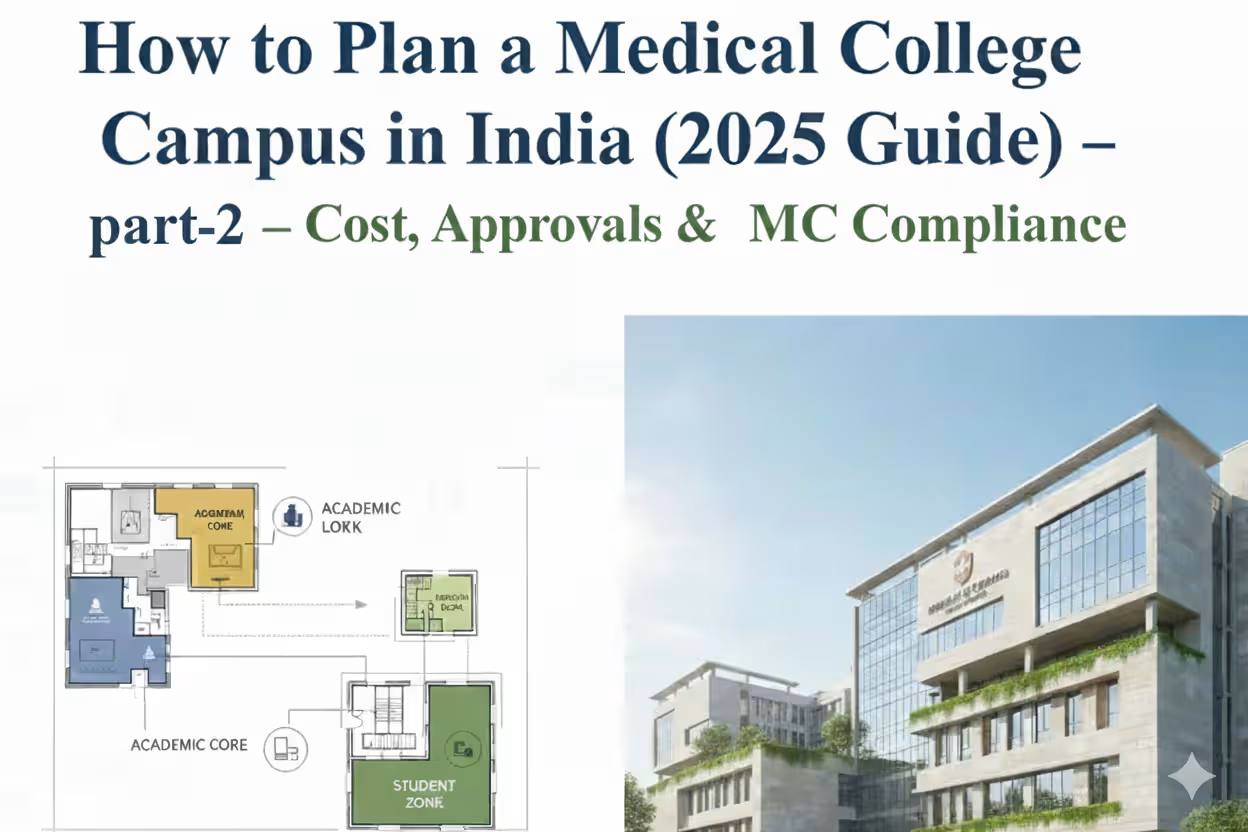
.avif)